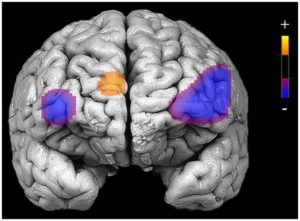
By John M. de Castro, Ph.D.
“Group mindfulness treatment should be considered as an alternative to individual psychotherapy, especially at primary health care centers that can’t offer everyone individual therapy,” – Jan Sundquist
“Primary care is at the front line of the health delivery system” (Craner et al., 2016). Most patients enter the health system either though primary care physicians who are responsible for wellness and for the diagnosis and treatment of mental and physical diseases. If the disease is common or simple, they’ll treat it themselves or if it’s more complex or dangerous they’ll refer it to specialists. Either way, they’re the first step in treatment.
Mood and anxiety disorders, including depression are the most common mental illnesses and affect almost 30% of the US population. Depression is the most common mental disorders seen in primary care patients, constituting nearly a third of all patients. People with an anxiety disorder are 3 to 5 times more likely than those without to visit their doctor and constitute around 6% of primary care patients. Hence these mood disorders are an important challenge for primary care. Yet, primary care physicians have little training in psychological therapy techniques and generally treat these disorders by prescribing drugs.
In recent years, it has become apparent that mindfulness training is a powerful treatment option for depression and anxiety disorders either alone or in combination with other therapies. It is rare, however, for mindfulness training to be implemented in the course of primary care. In today’s Research News article “Outcomes of a 6-Week Cognitive– Behavioral and Mindfulness Group Intervention in Primary Care.” See:
or see summary below.
Craner and colleagues recruited patients who came into primary care with a diagnosis of either depression or anxiety disorders. They were provided 6-weeks of therapy that was a combination of mindfulness training and Cognitive Behavioral Therapy (CBT). Instruction was provided in weekly 1-hour group sessions and patients were encouraged to practice at home. They were measured for depression and anxiety disorder intensity before and after the conclusion of treatment.
They found that after the therapy the patients had a large and significant reduction in both their depression and anxiety. This was particularly significant in that these impressive results were obtained from a relatively brief group treatment delivered in the primary care facility itself. To our knowledge this is the first demonstration of successful mindfulness-based treatment for mood disorders conducted in a primary care facility. This is an ideal point for delivery of services to treat a major mental health problem in a safe and effective way without expensive specialist involvement and without employing drugs. Because the services were delivered at the point of entry into the health care system, it allows the delivery of services quickly, immediately upon diagnosis, maximizing effectiveness.
But, the results must be interpreted cautiously as there was no comparison or control condition. A randomized controlled clinical trial is needed to insure that the positive results were due the mindfulness-based therapy and not due to a placebo effect, experimenter bias, spontaneous remissions, or some other confounding factor. But, these are exciting preliminary findings which clearly support conducting further research.
CMCS – Center for Mindfulness and Contemplative Studies
“Once I stopped battling anxiety, it lost its power over me. The negative thoughts do still pop up, but what has changed is how I react to them now that they no longer frighten me. On the few occasions that I have had panic attacks since practicing mindfulness, I have consciously switched to mindful breathing and the panic has subsided. The vicious circle has gone, and has been replaced with positive thoughts about everything I have achieved and may yet achieve. I will always have anxious thoughts, I’m only human, but I know they are just that, just thoughts.” – Amy Straker
This and other Contemplative Studies posts are also available on Google+ https://plus.google.com/106784388191201299496/posts
Study Summary
Craner, J. R., Sawchuk, C. N., & Smyth, K. T. (2016, July 14). Outcomes of a 6-Week Cognitive– Behavioral and Mindfulness Group Intervention in Primary Care. Families, Systems, & Health. Advance online publication. http://dx.doi.org/10.1037/fsh0000202
Abstract:
Introduction: Cognitive–behavioral and mindfulness-based interventions are established treatments for depressive and anxiety disorders; however, there is a lack of research for these interventions in primary care settings. The current study evaluates an evidence-based group intervention provided to primary care patients with a variety of mood and anxiety concerns. Method: Participants included 54 adult primary care patients who attended at least four sessions of a six-session cognitive–behavioral and mindfulness group. A total of nine separate groups were conducted, all of which were colocated within the primary care setting. Major depressive disorder and generalized anxiety disorder were the most common psychiatric conditions, with approximately 56% of the sample having one or more chronic medical conditions. Self-report measures of depression (Patient Health Questionnaire–9) and anxiety (Generalized Anxiety Disorder Questionnaire–7) were completed at each session. Results: Significant improvements were noted on self-reported measures of depression and anxiety when comparing pre- and posttreatment assessment measures with large effect sizes. Discussion: A brief, principle-based cognitive–behavioral and mindfulness group intervention delivered in primary care was associated with improved symptoms across a range of patient presentations. Evidence-based group interventions in primary care settings have the benefits of increased access and cost-effectiveness.








